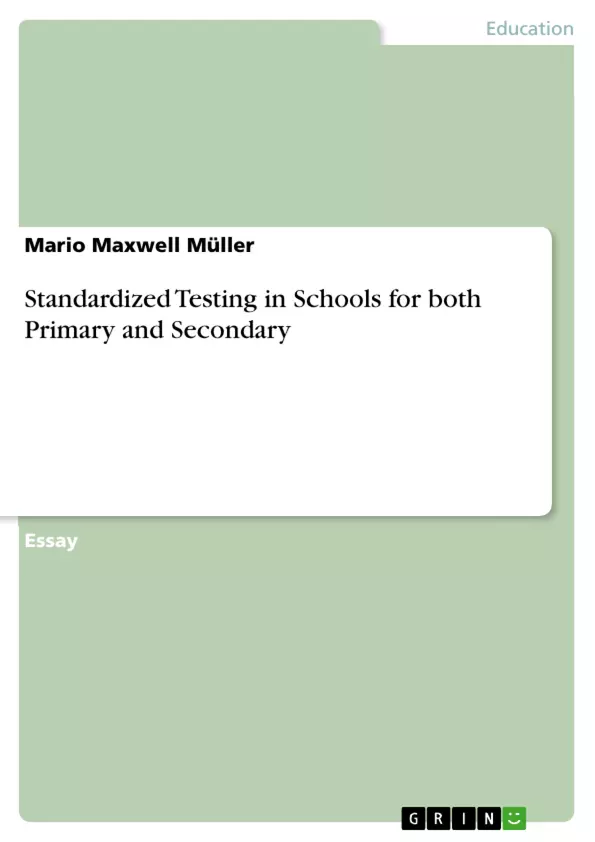The following essay will examine standardised testing that has been used throughout the world and in many countries, especially in America. We use these tests regularly and consistently in International Schools to gather information, and data about students especially in Mathematics, English (Literacy), and General Sciences. Most teachers use these to establish reading abilities for students in English in Primary (Elementary) Schools before they enter Secondary (Middle & High) schools. Schools abroad will continue to use standardised tests to allow students to achieve their goals by setting specific targets for them to achieve. These are monitored closely to allow institutions to make adequate provisions for their educational needs.
Inhaltsverzeichnis (Table of Contents)
- Introduction
- Definition of Standardised Testing
- The positives and negatives of using standardised testing
- Conclusion
Zielsetzung und Themenschwerpunkte (Objectives and Key Themes)
This essay explores the advantages and disadvantages of standardized testing in educational settings, specifically focusing on its use in primary and secondary schools. The author examines the purposes and applications of standardized testing, including its role in assessing student progress, identifying areas for improvement, and informing instructional practices. The essay also discusses the potential impact of standardized testing on student learning and the broader educational system.
- The definition and purpose of standardized testing
- The positive and negative implications of standardized testing
- The role of standardized testing in student assessment and instructional decisions
- The use of standardized testing in various educational contexts
- The relationship between standardized testing and student achievement
Zusammenfassung der Kapitel (Chapter Summaries)
- Introduction: This chapter introduces the topic of standardized testing and its widespread use in education. It highlights the importance of assessments in gathering data about student progress and informing educational decisions. The author discusses the use of standardized testing in various countries, particularly in America and international schools.
- Definition of Standardised Testing: This chapter provides a comprehensive definition of standardized testing, emphasizing the consistency of questions, scoring methods, and the ability to compare student performance. It outlines various purposes for standardized testing, including licensure, curriculum-based assessment, exit testing, and admissions.
- The positives and negatives of using standardised testing: This chapter delves into the advantages and disadvantages of standardized testing. The author discusses the benefits of standardized testing, such as its potential to identify student strengths and weaknesses, inform instructional practices, and provide a common benchmark for comparing student performance. The chapter also explores the potential drawbacks of standardized testing, such as its narrow focus on specific skills, its potential to lead to teaching to the test, and its impact on student motivation and stress levels.
Schlüsselwörter (Keywords)
The primary keywords and focus topics of this essay include standardized testing, curriculum, education, English, mathematics, student assessment, instructional decision making, student achievement, and the potential impact of standardized testing on the educational system.
- Arbeit zitieren
- Mario Maxwell Müller (Autor:in), 2022, Standardized Testing in Schools for both Primary and Secondary, München, GRIN Verlag, https://www.hausarbeiten.de/document/1281744


